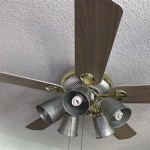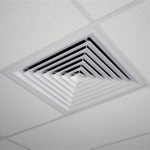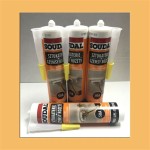Are Nail Pops in Ceiling Dangerous for Cats and Dogs?
Nail pops, those small, often circular protrusions that appear on ceilings and walls, are a common issue in many homes. They are caused by the settling of a house, changes in humidity and temperature, or improper installation of drywall. While often considered a cosmetic issue for homeowners, the question arises: are nail pops a hazard to the health and safety of cats and dogs? This article will explore the potential dangers nail pops pose to pets, the materials involved, and preventative measures to ensure a safer environment for furry companions.
The primary concern surrounding nail pops and pets stems from the potential ingestion of materials that may become dislodged from the ceiling. When a nail pop occurs, the drywall compound used to cover the nail can crack and crumble. This debris, along with tiny fragments of the drywall itself, can fall to the floor, attracting curious and opportunistic pets. The type of materials used in drywall construction and the potential for associated hazards are areas that will be examined.
Understanding the composition of drywall and the finishing compounds used in ceilings is crucial to assessing the risk. Drywall primarily consists of gypsum, paper, and additives. Gypsum itself is generally considered non-toxic in its natural state. However, the additives and the finishing compounds used to cover nail heads and seams can contain ingredients that are potentially harmful if ingested in significant quantities. Furthermore, older homes might contain drywall manufactured with asbestos, which poses a severe health risk if inhaled or ingested. Identifying the presence of asbestos requires professional testing and remediation.
Nail pops themselves are not inherently poisonous. The danger lies in the ingestion of the materials associated with them. Considering the possible toxicity of these materials will provide a greater understanding of the risks to domestic animals.
Potential Hazards of Ingested Materials
The materials commonly found in drywall and patching compounds present a range of potential hazards when ingested by cats and dogs. While small amounts might only cause mild gastrointestinal upset, larger quantities or specific ingredients can lead to more serious health issues.
One concern is the presence of calcium carbonate, a common ingredient in drywall and patching compounds. While generally considered safe in small doses, excessive ingestion of calcium carbonate can lead to hypercalcemia, a condition characterized by elevated calcium levels in the blood. Symptoms of hypercalcemia in pets include vomiting, diarrhea, increased thirst and urination, lethargy, and muscle weakness. In severe cases, hypercalcemia can damage the kidneys and other vital organs.
Furthermore, some older patching compounds may contain crystalline silica. Inhalation of crystalline silica dust is a known carcinogen, and while ingestion is less likely to cause cancer, it can still irritate the digestive tract. Chronic exposure to silica dust, even through ingestion of small amounts over time, could potentially lead to respiratory problems or other health complications.
The paper facing of drywall can also present a choking hazard, particularly for smaller dogs and cats. If ingested in large pieces, the paper could obstruct the airway or cause intestinal blockage, requiring veterinary intervention.
Additionally, some patching compounds may contain binding agents and other additives that are not readily digestible by pets. These substances can cause digestive upset, vomiting, and diarrhea. In rare cases, allergic reactions to these ingredients are also possible.
If pets are consistently licking or consuming drywall or patching compound debris, a veterinary examination is warranted to assess their calcium levels and overall health.
Physical Risks Associated with Nail Pops
Beyond the chemical risks associated with ingesting drywall materials, nail pops can also present physical dangers to pets. The exposed nail itself can be a source of injury, and the crumbling drywall can create sharp edges that could cause cuts or abrasions.
A protruding nail from a nail pop can pose a significant risk, especially to inquisitive cats who may try to rub against or play with it. The nail could scratch or puncture the skin, leading to pain, infection, and potentially requiring veterinary care. Smaller dogs, particularly puppies, are also vulnerable to nail-related injuries.
The jagged edges surrounding a nail pop can be surprisingly sharp, creating a hazard for pets walking, jumping, or playing near the affected area. These sharp edges can easily cut paws, legs, or other body parts, leading to bleeding and potential infection. Cats, known for their agility and climbing abilities, are particularly susceptible to injuries from sharp edges on ceilings.
Furthermore, if a larger piece of drywall becomes dislodged due to a nail pop, it could fall and potentially injure a pet. While smaller pieces are unlikely to cause serious harm, larger fragments could cause bruises, lacerations, or even more severe injuries if they land on a vulnerable area.
Prompt repair of nail pops is crucial to eliminate these physical hazards and minimize the risk of injury to pets.
Preventative Measures and Mitigation Strategies
The best way to protect cats and dogs from the potential dangers of nail pops is through preventative measures and prompt repair. Regular inspection of ceilings and walls, along with proactive maintenance, can significantly reduce the risk of exposure to hazardous materials and physical injuries.
Regularly inspect ceilings and walls for signs of nail pops, cracks, or crumbling drywall. Early detection allows for prompt repair before the problem escalates and poses a greater risk to pets. Pay particular attention to areas where pets frequently spend time, such as sleeping areas, play areas, and feeding areas.
When repairing nail pops, use pet-safe materials. Opt for patching compounds that are specifically labeled as non-toxic or low-VOC (volatile organic compounds). Avoid products that contain crystalline silica or other potentially harmful ingredients. Consultation with a hardware store employee or a building professional can assist in choosing appropriate and safe repair materials.
During the repair process, keep pets away from the area to prevent them from inhaling dust or ingesting debris. Cover furniture and flooring to minimize dust contamination. After completing the repairs, thoroughly clean the area with a vacuum cleaner equipped with a HEPA filter to remove all traces of dust and debris.
Consider sealing repaired areas with a pet-safe paint or sealant. This will further prevent the crumbling of drywall and reduce the risk of exposure to potentially harmful materials. Choose paints and sealants that are low-VOC and specifically designed for interior use.
If nail pops are a recurring problem, investigate the underlying cause. This may involve addressing issues such as excessive humidity, temperature fluctuations, or structural problems in the house. Consulting with a building inspector or contractor can help identify and resolve the root cause of the problem, preventing future nail pops and protecting pets.
It's essential to be aware of the age of the home, especially if built before the 1980s. Older homes may contain asbestos in drywall or other building materials. If suspecting the presence of asbestos, do not attempt to repair nail pops. Instead, seek professional assessment and remediation services. Asbestos abatement requires specialized training and equipment to ensure safe removal and disposal.
Regular grooming of pets can also help to identify potential injuries from nail pops. Brushing and examining their fur and skin can reveal cuts, abrasions, or other signs of trauma that may require veterinary attention.
By implementing these preventative measures and mitigation strategies, homeowners can create a safer environment for their cats and dogs, minimizing the risks associated with nail pops in ceilings and walls. Consistent vigilance and proactive maintenance are key to protecting the health and well-being of beloved animal companions.

Dog Nail Overgrown Pawpad Issue

How To Remove Popcorn Ceilings And When You Should Call A Professional The Seattle Times

Good Alternative To Declawing Your Cat Which Isn T Recommended Anymore Have You Ever Tried Softpaws Whatdoyouthink

Subcutaneous Fluids For Pets 101 Petmd

Ceiling Mold Growth Learn The Cause And How To Prevent It Environix

Common Types Of Drywall Damage

How To Cover Popcorn Ceiling With Drywall Diy Family Handyman

Did You Know That Some Common Flowers Can Be Toxic To Our Furry Friends Keep These Out Of Your Pet S Reach Toxicflowers Toxicplants Doghealth Dogtips Dogs

How To Tell If Your Popcorn Ceiling Has Asbestos

Flea Doctor Electronic Comb For Dogs Cats
Related Posts








